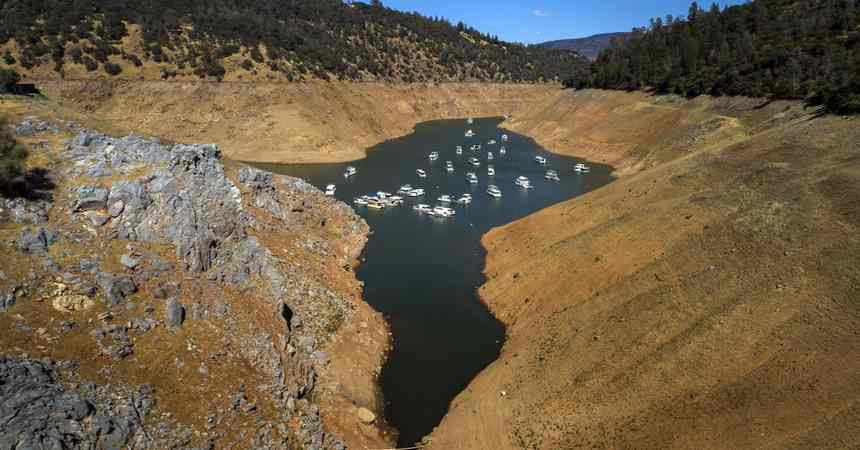Drought is putting pressure on California’s already stressed-out grid. As water reservoirs run dry, there’s been a significant drop in hydroelectric generation. Without enough water pressure to quickly turn turbine blades, there could be electricity shortages right when residents need it the most.
Rolling blackouts have already become a new norm for the state as utilities shut down power lines in an attempt to avoid sparking fires during hot, dry weather. But summertime outages also occur when residents crank up their air conditioners to beat the heat and demand outpaces the available power supply.
“California relies on hydro for so much of its demand, so any drought can put the state in a tight position.”
“California relies on hydro for so much of its demand, so any drought can put the state in a tight position,” said Lindsay Aramayo, an industry economist with the US Energy Information Administration.
Hydropower is a significant source of energy for the state. In 2019, it made up about 17 percent of California’s electricity mix. And while California is no stranger to drought, this is particularly bad. More than a third of the state is experiencing “exceptional drought,” and more than 40 percent of its residents are living under a drought state of emergency.
The two largest reservoirs in California, Lake Shasta and Lake Oroville, are both at less than half of their capacity. Water levels are even lower at Lake Mead, which hit its lowest mark since the Hoover Dam was built in 1931. The drought is expected to force Oroville’s hydropower plant offline for the first time ever. Smaller reservoirs are in trouble, too. At California’s Folsom Lake, the remains of a plane that went down in 1986 surfaced because the reservoir was so empty.
While farmers abandon thirsty crops and the state’s governor pleads with residents to save water at home, the drought has already cut into the state’s power supply. Hydroelectric generation dropped by 37 percent during the first four months of the year compared to the same period in 2020. It’s down a whopping 71 percent compared to that time in 2019. That trend is expected to continue this year, the US Energy Information Administration said last week.
Drought has already cut into the state’s power supply
Earlier this month, state energy authorities decided to purchase additional power to avoid outages this summer. It’s a step that’s only taken when a “significant event” poses a risk to the reliability of the grid. It could purchase energy from other states, but places it typically imports from, like the Pacific Northwest, are also facing drought.
“Summer has barely begun and we have already had repeated extreme heat events creating dangerous conditions and shattering records across the country,” said a July 1st joint statement from the heads of the California Public Utilities Commission, California Energy Commission, and California Independent System Operator. “Unprecedented” heat and drought driven by climate change are forcing California to act, the statement said.
Water and energy shortages may force the state to turn to more fossil fuels for electricity. Natural gas power plants frequently step in to meet peak demand during the summer. That can mean slightly higher utility bills for residents since hydropower is pretty cheap in California. A drought from 2012–2015 cost ratepayers about $2 billion, according to one analysis by the nonprofit research group Pacific Institute.
“We’d like to break that cycle”
There’s another problem: natural gas power plants, unlike dams, pump out greenhouse gas emissions and other pollutants. Droughts were actually responsible for roughly 10 percent of average annual carbon dioxide emissions from generating power in California, Idaho, Oregon, and Washington from 2001 and 2015, according to a Stanford analysis. All of those emissions fuel more climate change, which, in turn, drives even more severe droughts in the Western US.
“That’s a bad cycle, and we’d like to break that cycle, so that during droughts we’re making up our lost hydro power with other non-carbon [polluting] energy sources,” says Peter Gleick, climate scientist and president emeritus of the Pacific Institute. The good news is there’s now more solar and wind energy online to fill in the shortfall from hydropower. But Gleick is still concerned that the drought will ultimately result in more pollution while further stressing California’s power grid.
“It’s really an indication that we’re going to have to invest in strengthening the grid across the country in the face of climate change,” Gleick says.

